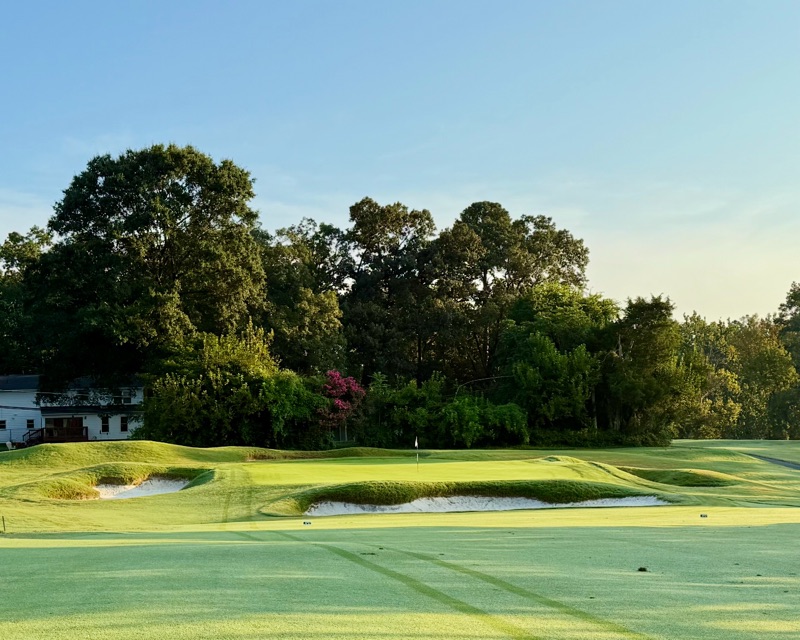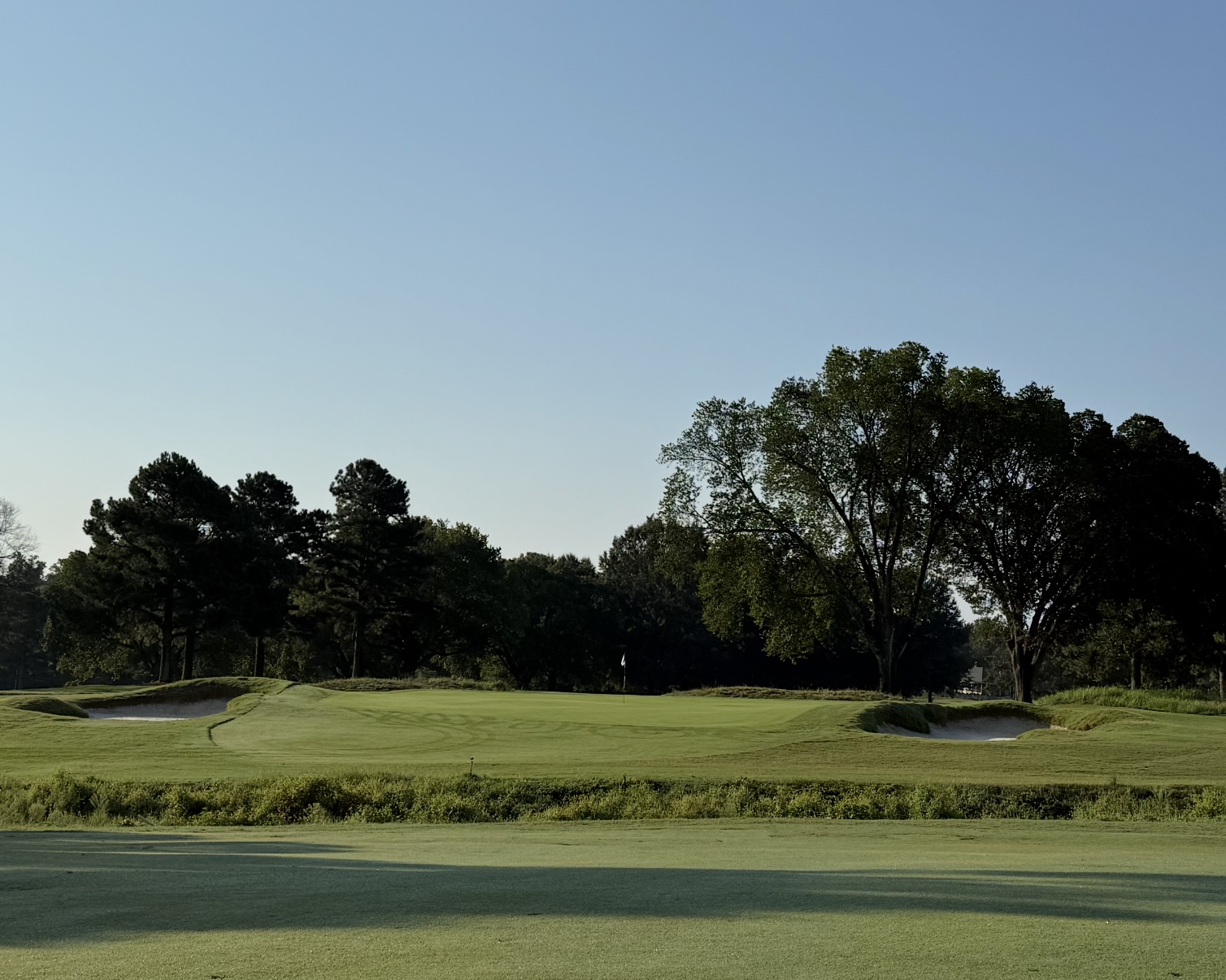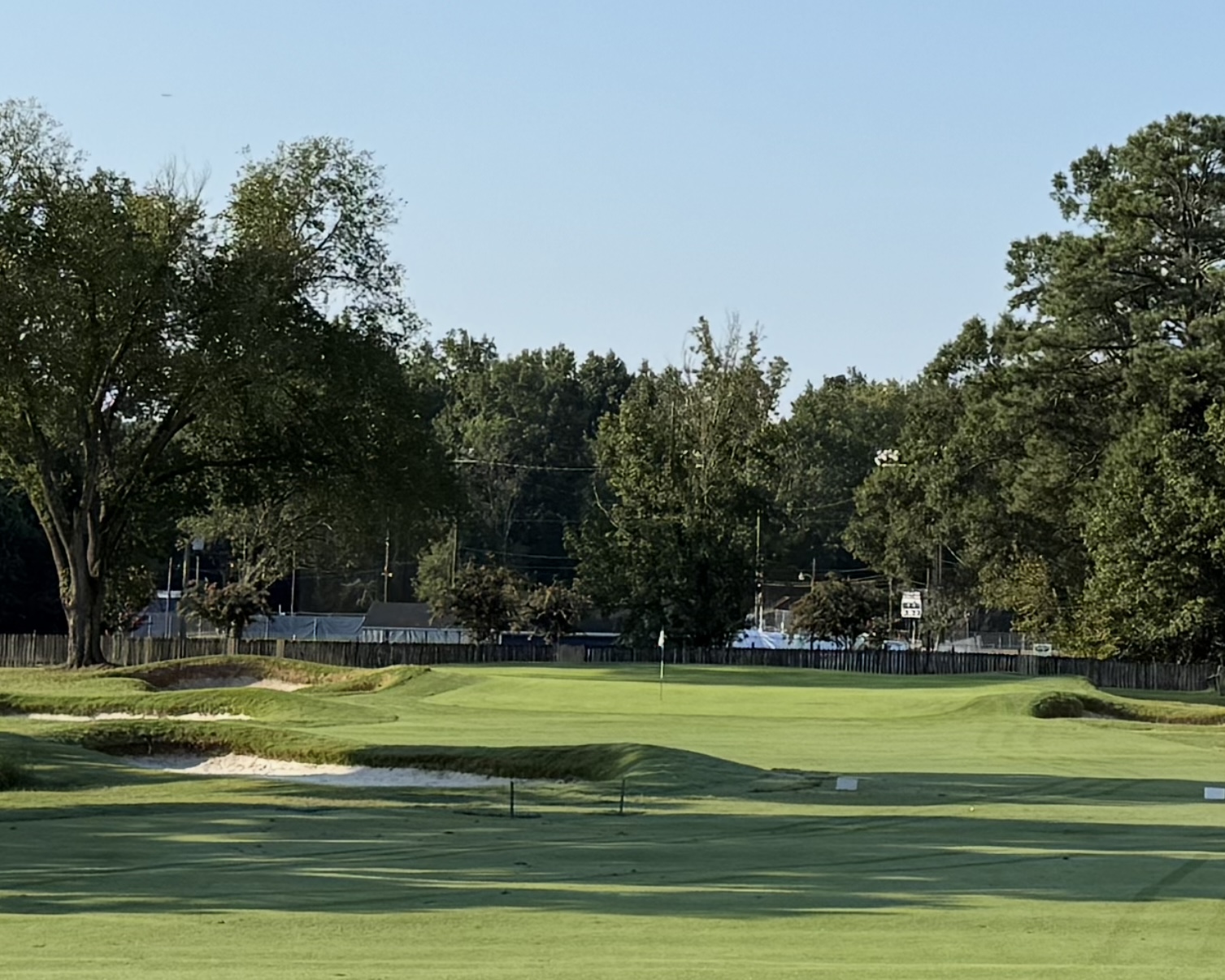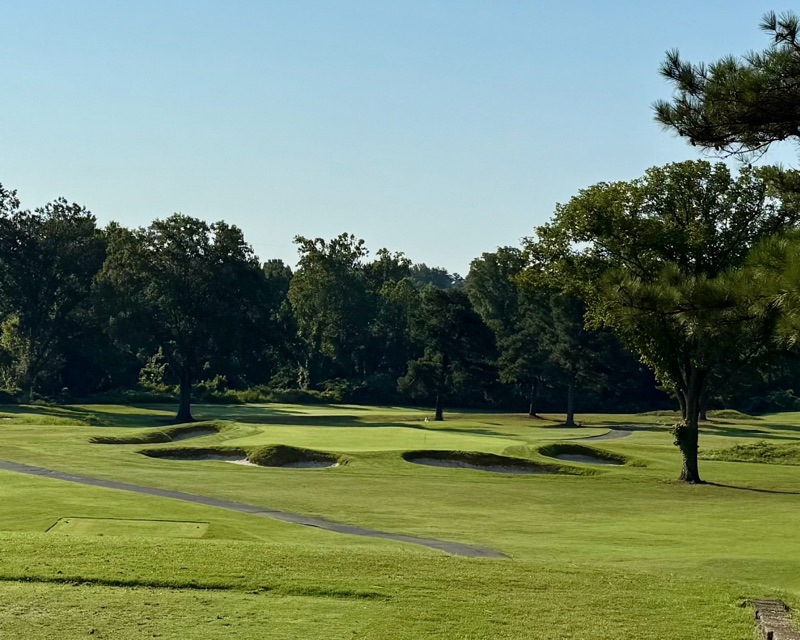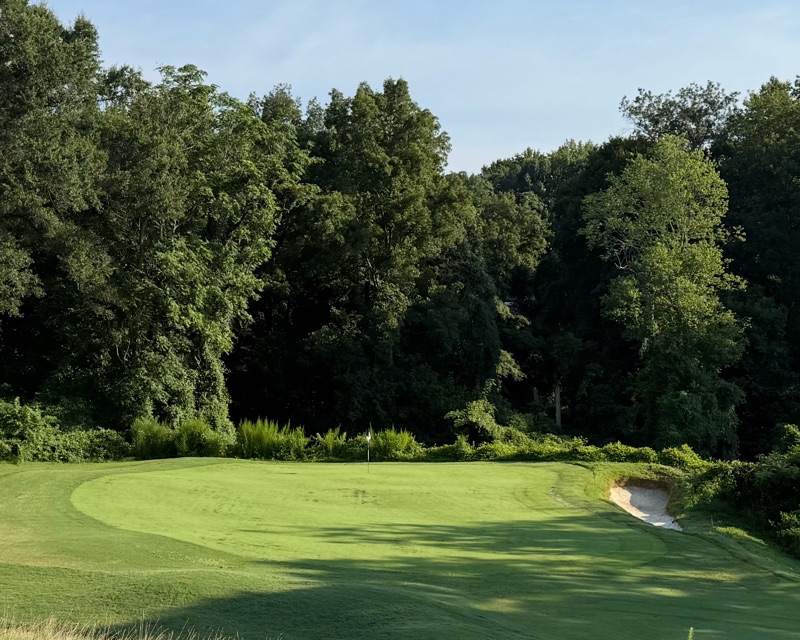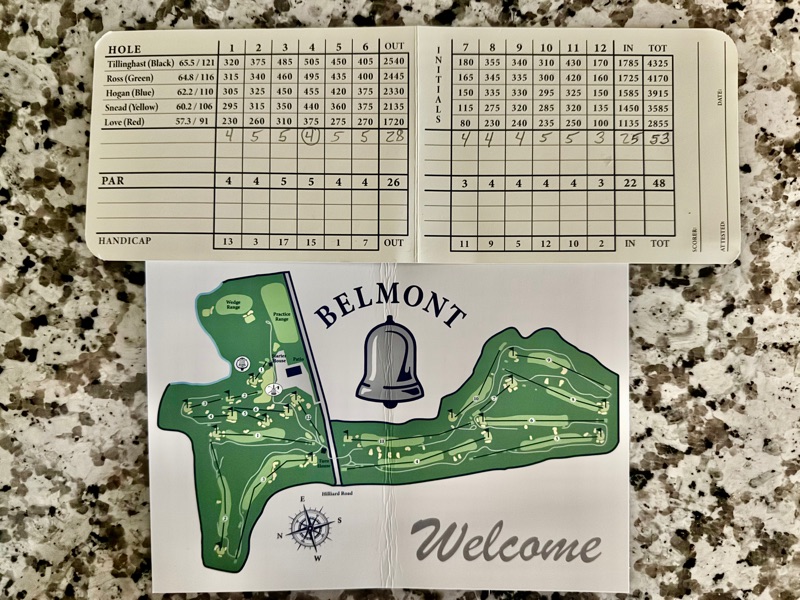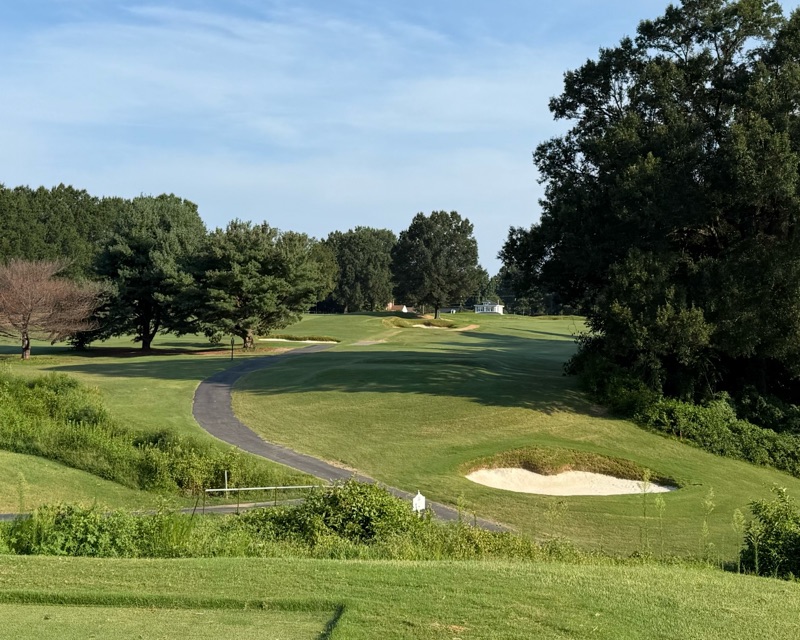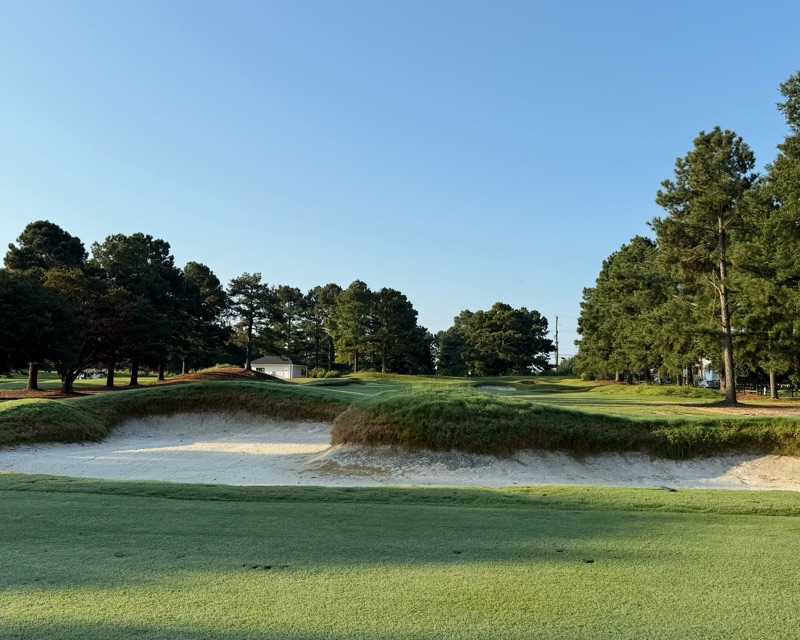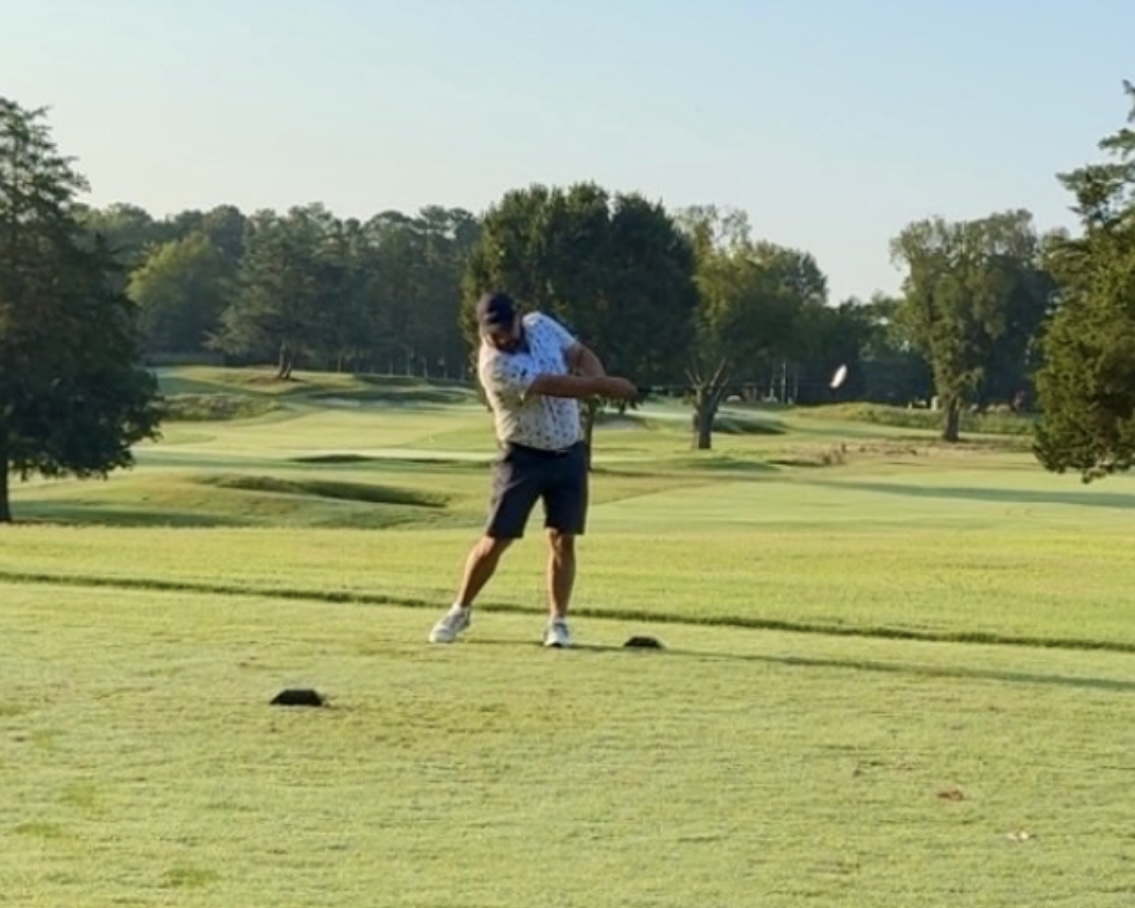The Langford and Moreau nine gives the Heritage Course the star power it needs to make Marquette Golf Club a legitimate 36 hole adventure. While Greywalls is undoubtedly the showstopper, classical architecture fans will appreciate the cool engineered greens that LM are reknown for building. I was skeptical when a well traveled friend of mine claimed they rivaled Lawsonia, but I think he may have hit the nail on the head because these greens complexes are fantastic!
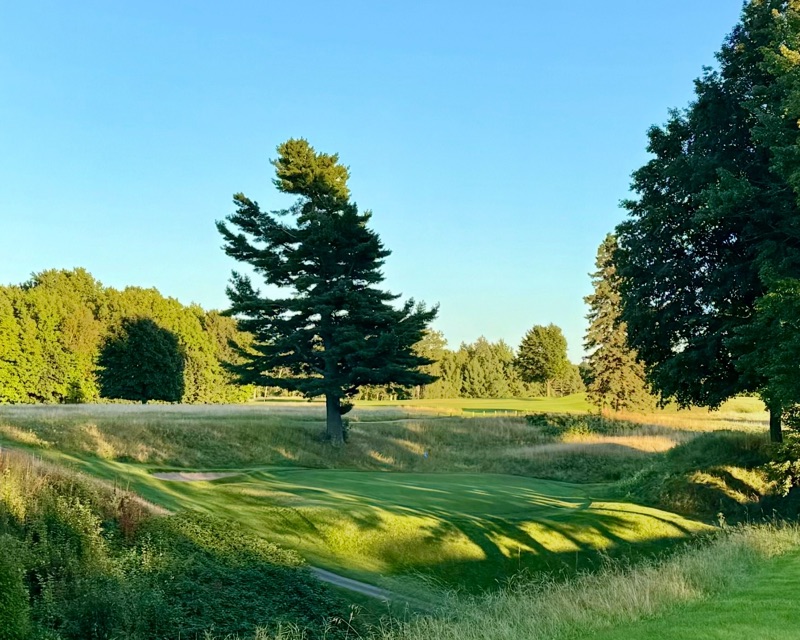
Superintendent Craig Moore did a remarkable job recapturing the original dimensions of LM greens which had seen them shrink in size over the years to cut maintenance costs. Not only are there more pinnable areas available, but the slopes, mounds, and bunkers make mishits or overly aggressive shots bound into unpredictable situations. Recovery shots require deft touch, and high skilled players will be rewarded with their ability to save par. Most impressive is the interior contouring with little ridges and rolls separating great shots from mediocre ones.
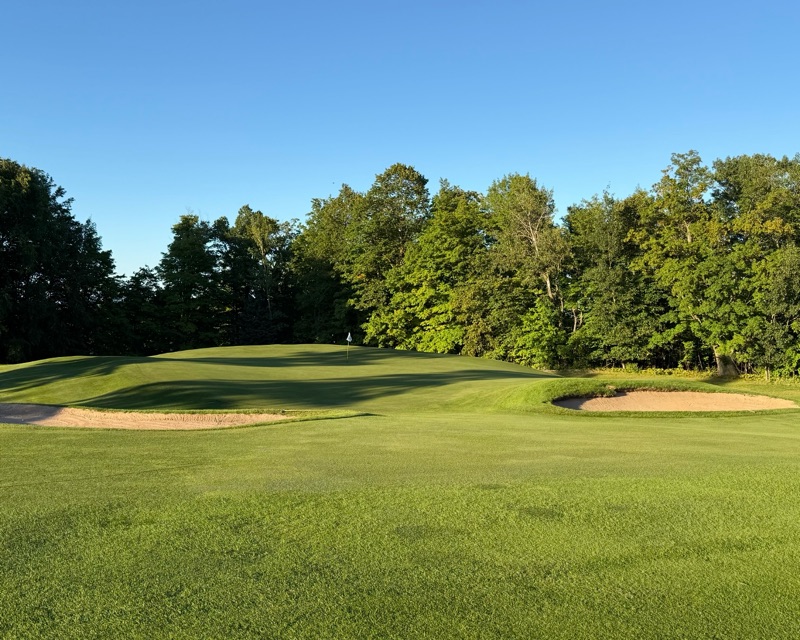
(The 515 yard par five fourth is the first LM hole of the day. It plays up and over a ridge with the green guarded by two bunkers well short. The slope beyond the sand funnels everything to the left where a large mound will make chipping quite difficult…
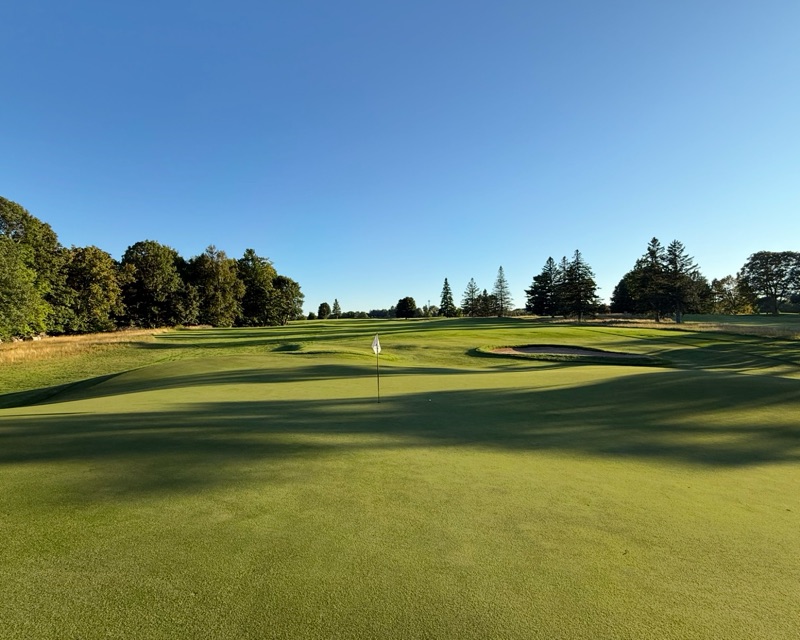
…the green has high shoulders both left and right. The middle will accept a shot easily but any putt that has to advance by putting towards the sides will be a big bender…
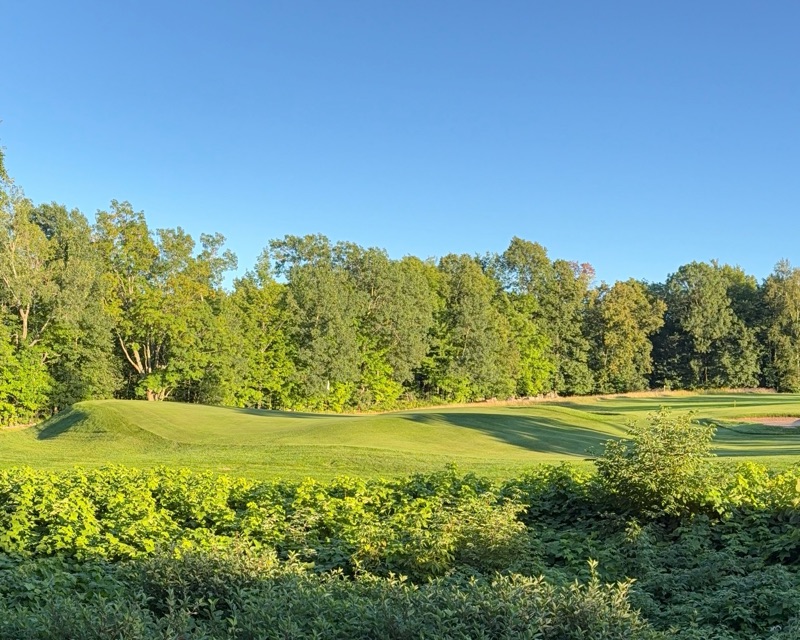
…this view from five tee highlights the severity of the green complex.)
The David Gill holes have a different feel to them, and understandably so as LM designed the original nine in 1926 and Gill added the second nine in 1969. Gill apprenticed under Robert Bruce Harris, an architect whose style featured a formulaic approach where bunker width and entrances were decided by what iron should be in the golfers hand. This seemed to be the case as the shorter par fours all had tighter or all aerial approaches. The greens were medium size with tilt being the main characteristic. It’s a more playable style that demands less skill to scrap out a par.
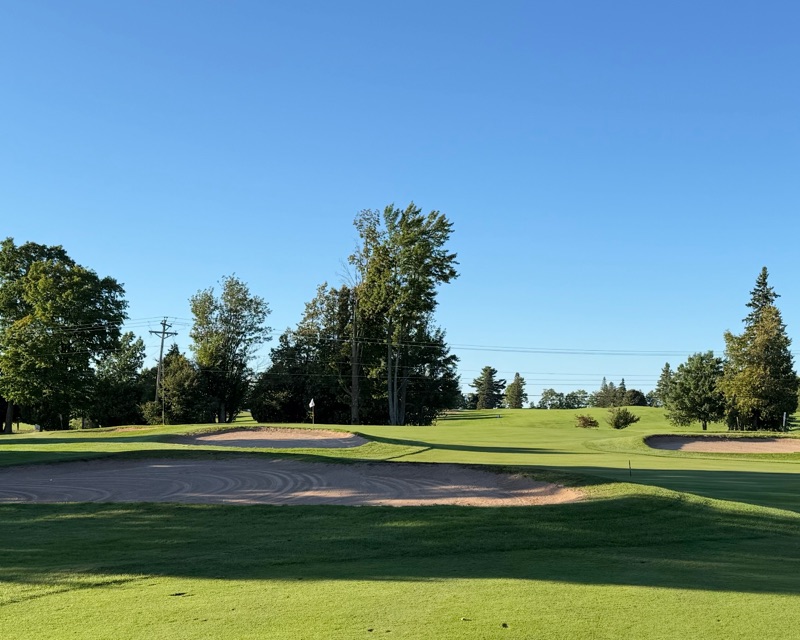
(The 336 yard opening hole is a David Gill design. Almost the entire green is fronted by sand with only the right side being available for a low running shot.)
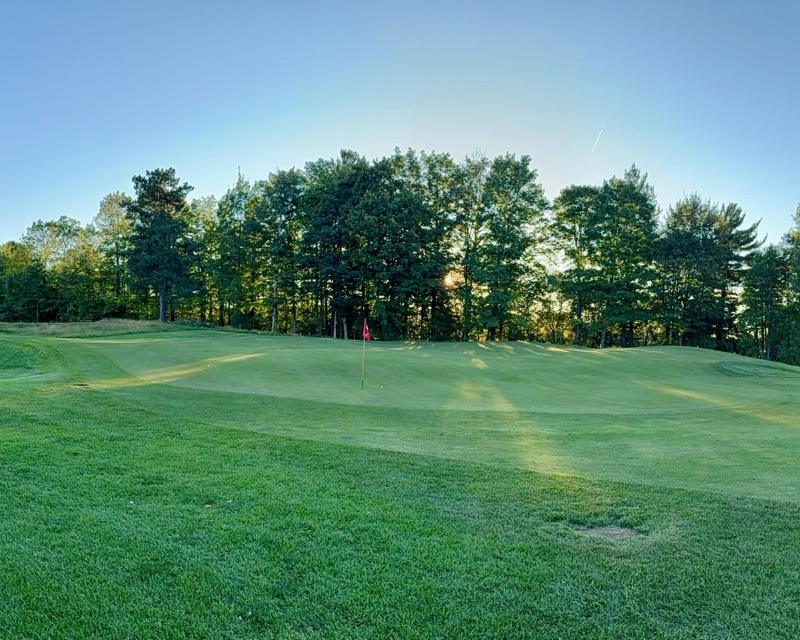
(The 287 yard sixth is a driveable par four that LM capped off with an amazing green. Today’s pin is on a front apron with a large slope backdropping it. Once the flag moves towards the center, notice how wider the green becomes with outstretched pinning areas settling behind knobs. Each day brings an entirely different approach.)
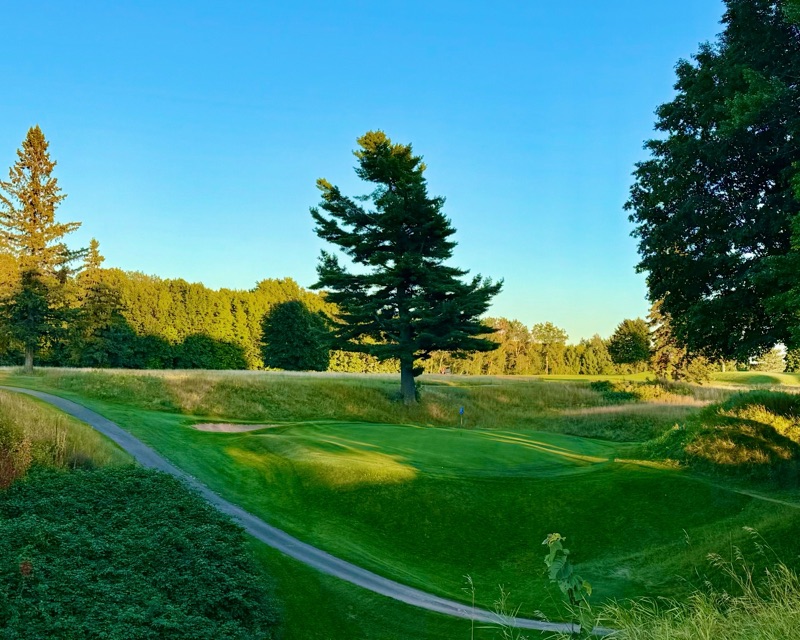
(The 143 yard par three seventh is the best hole on the course and highlights the pure genius in LM routing ability. The green sits in a little dell all by itself with tall grass and hillocks beside it and a steep drop off fronting. It’s a beautiful little hole, and one where you must execute a a controlled short iron to safely find the putting surface.)
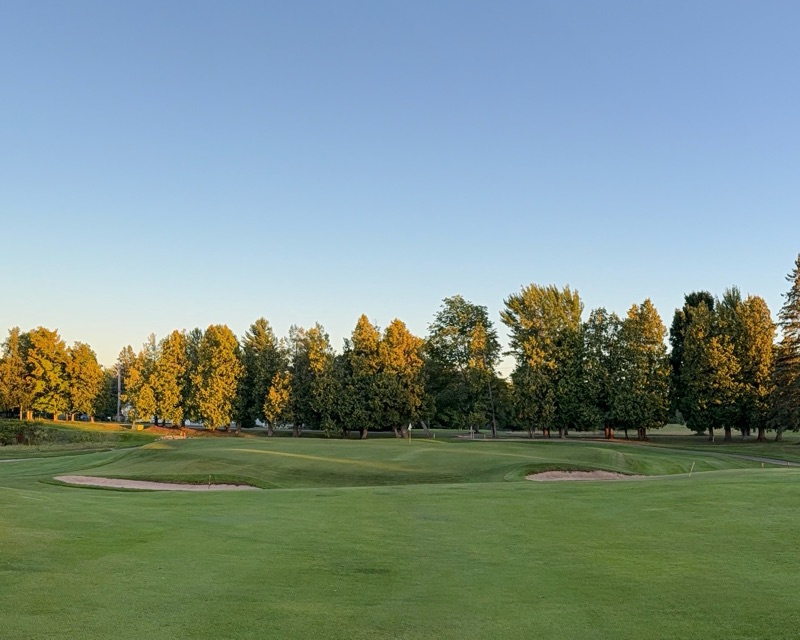
(The 401 yard par four eighth features a blind tee shot hit over the hill to set up this approach shot into the green. Look at the bunkering, the way the green pitches in separate ways. How aggressive can you be? So much thought goes into attacking LM green complexes!)
Most golfers who make the trek up north to the U.P. and the Marquette Golf Club will ever step foot onto the Heritage Course. (Greywalls is that good. I personally have it as one of the top ten courses I’ve ever played) However, this should start to change as more golfers see the life brought back into the LM holes and get a reprieve from the incredible demands Greywalls puts on its challengers. It’s also a great change of pace course that is budget friendly ($72) and good confidence booster. If you find yourself up here, don’t skip it. It’s a ton of fun!! I give the Heritage a 6 (very good)(worth driving 1-2 hours to play).
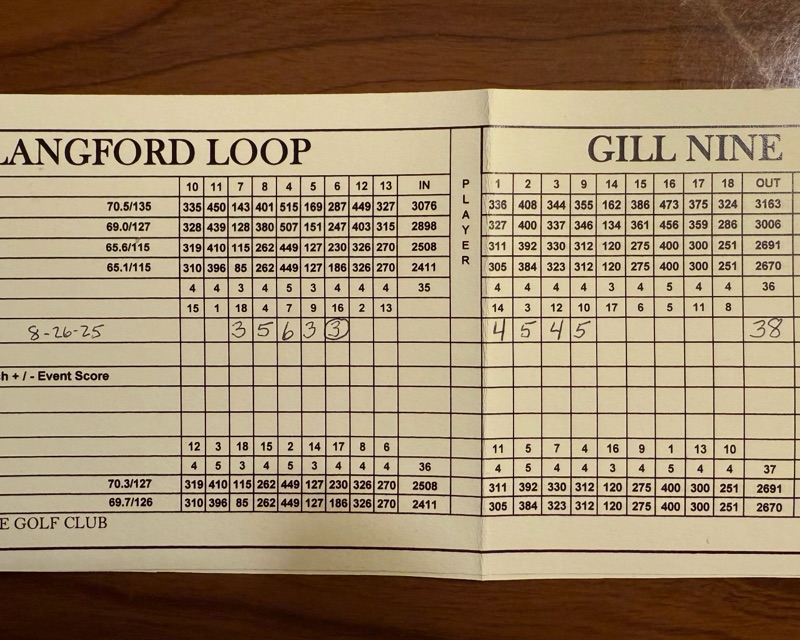
(Every year for two weeks, I believe around Labor Day, they split up the nines so you can play the LM holes as one loop. This makeshift scorecard shows the different holes on top and where they fit into the current routing. I unfortunately missed it by one day, so I played the front nine which has five LM holes including both par threes. The par five fourth and par three seventh are recognized as the best holes on the golf course. Blog 486)
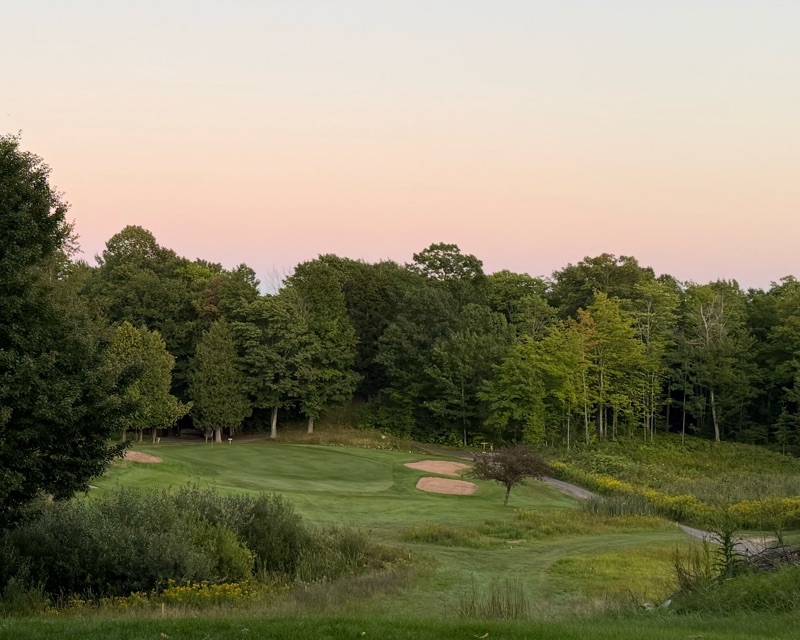
(David Gill’s beautiful downhill 162 yard par three fourteenth. I added this pic because one drives just below the tee box when the front parking lot fills up.)
Greywalls course review:
https://golfingwithshawn.blogspot.com/2022/08/greywalls-marquette-golf-club-marquette.html?m=1

